全站搜索
Pesquisar em todo o sítio Web
Pesquisar em todo o sítio Web
From gold to tungsten, our Jigging Separator Machine handle it all – versatile solutions for every mining need
A jigging machine is a piece of equipment that implements the jigging process. The process in which the material is sorted according to density differences, mainly in a vertically rising and falling stream of variable speed media. The difference in size and shape of the material has an effect on the result of the separation. The medium used in jigging can be either water or air. When water is used as the sorting medium, it is called hydraulic jigging; when air is used as the sorting medium, it is called wind jigging.
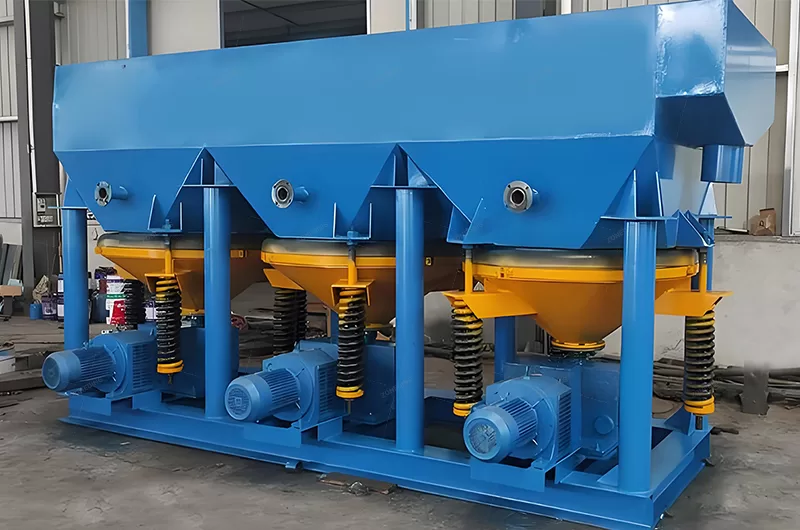
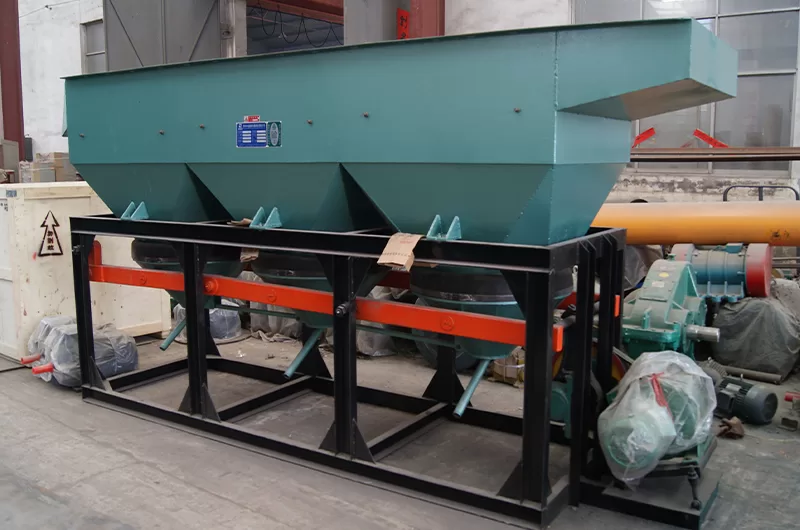
According to the different equipment structure and water flow movement, it can be roughly divided into the following categories: piston jigger, diaphragm jigger, air pulsation jigger, and dynamic screen jigger.
Selection Guide
Jig machine selection steps: first and jig machine manufacturer telephone contact, by asking some technical questions, you can roughly understand whether this manufacturer is professional, the next step is to carry out beneficiation tests, this step is critical, you bring ore to the jig machine manufacturer, the general situation is 30-40 kg of raw ore, the regular manufacturers have small jig machine available for free test, the test is not as good as the actual production indicators, but also The test is not as good as the actual production indicators, but also from the side to grasp the ore beneficiation indicators, and jigger manufacturer’s technology is perfect, if the test link can reach the ideal indicators, then this manufacturer has a certain strength, and then is to order equipment links, look at the quality of jigger equipment, external viewing jigger working principle is reasonable, and according to your site conditions for improvement, of course, the important issue is the price, the price is also based on the above The price is also based on the above cases of negotiation, the final order products, jigger manufacturers have professional technical staff to install and commission until you produce qualified products.
Jig concentrator is a gravity separator machine used to separate coarse grain ore in alluvial gold, crushed rock gold, coltan, tin, tungsten, diamond, barite, iron, manganese, fluorite, garnet, etc

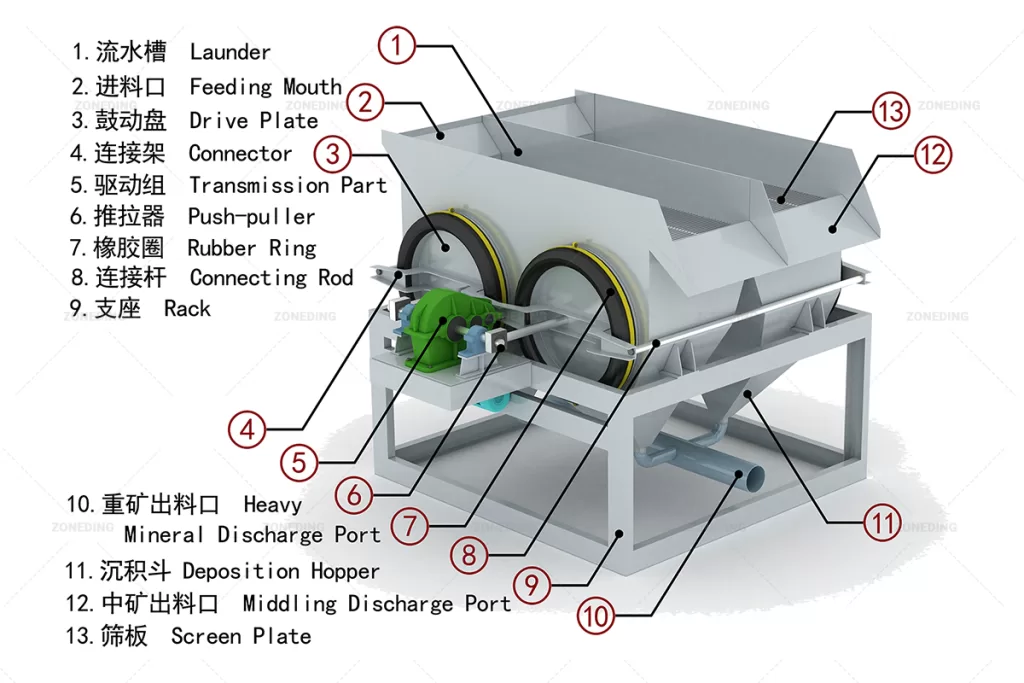
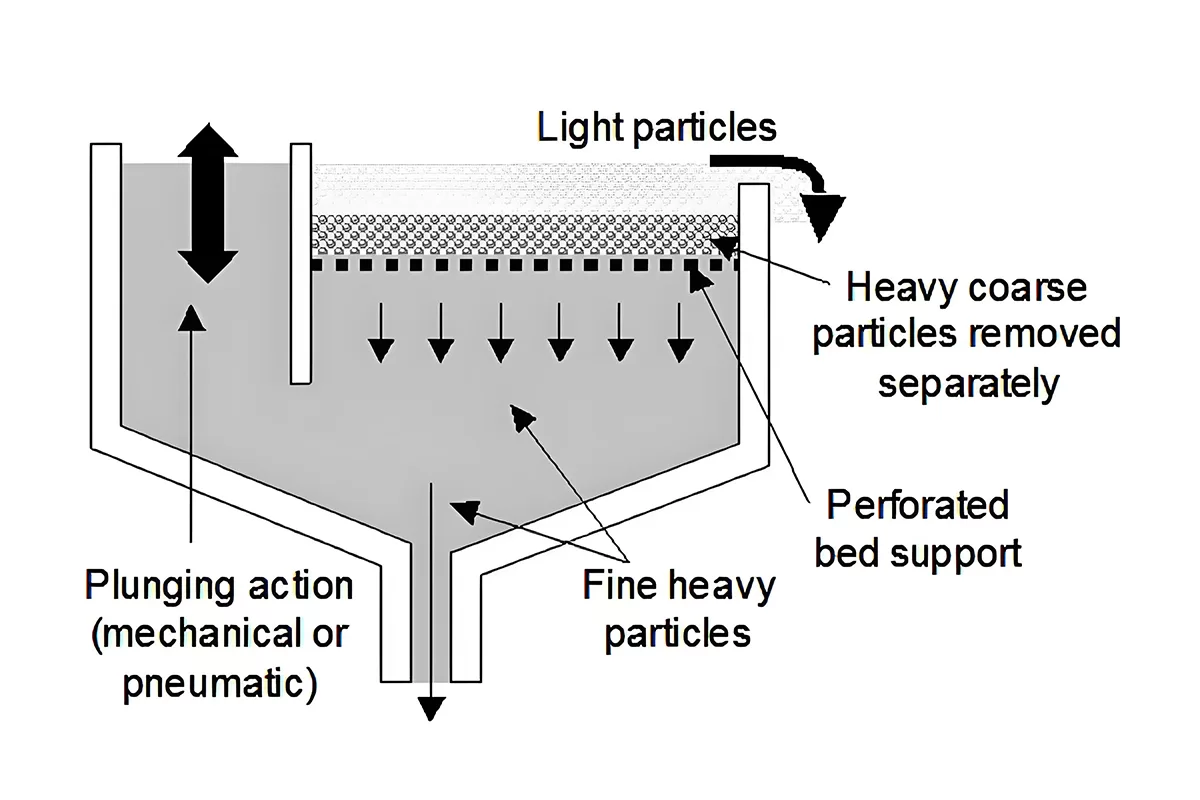
Raw ore is sent into the jigging chamber, due to the drumming effect of the diaphragm, the mineral grains in the media are stratified according to the specific gravity, fine and heavy mineral grains through the artificial bed particles of the gap and sieve holes, deposited in the jigging hopper of the hopper storage hopper, the upper layer of coarse and light mineral grains (materials) by the media flow rushed to the sieve at the end of the discharge port, due to the after jigging chamber than the former jigging chamber location is lower than the 50mm, so the light mineral grains through the front chamber tailboard overflow into the back room, and again subject to jigging, after which the different minerals are separated. After that, the minerals with different specific gravity will be separated and the sorting operation will be completed.
Adopting conical slide valve, the failure rate is reduced by 80%, energy consumption is small, it can realize the sorting needs of different materials and increase the processing capacity by more than 35%.
1. Energy saving, high efficiency, environmental protection.
2. Wide range of particle size, 0-30mm particle size minerals can be classified into the selection.
3. The base is made of channel steel, and the collective is made of welded steel plate with good quality and high abrasion resistance.
4. The classifier adopts tile lining, with very low maintenance rate and higher durability of wearing parts.
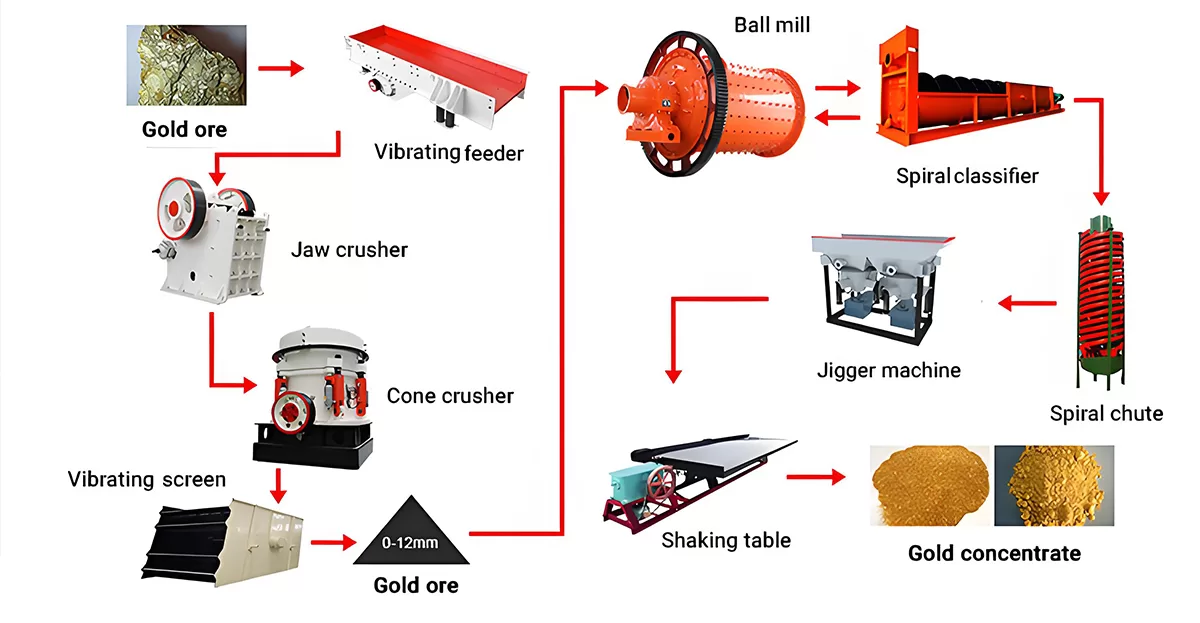
| Modelo | Jig Area (M2) | Stroke (R/Min) | Feeding size (mm) | Hutch Water ( T/H) | Pressure Water (kg/cm2) | Capacity;(T/H) | Power;(KW) | Overall dimensions (mm) | Weight (T) |
| JT0.57-1 | 0.57 | 60-160 | <6 | 1-2 | ≥0.3 | 1-2.5 | 1.5 | 1560x820x1550 | 0.612 |
| JT1-1 | 1.04 | 60-160 | <10 | 2-3 | ≥0.3 | 4-10 | 2.2 | 1322x1190x1915 | 0.9 |
| JT2-2 | 2.28 | 60-160 | <10 | 2-4 | ≥0.3 | 8-15 | 3 | 3225x1550x2150 | 1.637 |
| JT4-2 | 4 | 50-125 | <10 | 4-8 | ≥0.1 | 8-16 | 7.5 | 4240x1990x2750 | 4.6 |
| JT4-2A | 4 | 50-125 | <10 | 4-8 | ≥0.1 | 8-16 | 8 | 4240x1990x2750 | 4.6 |
| JT5-2 | 4.86 | 80-120 | <10 | 4-10 | ≥0.1 | 10-20 | 7.5 | 3940x2006x2580 | 4.6 |
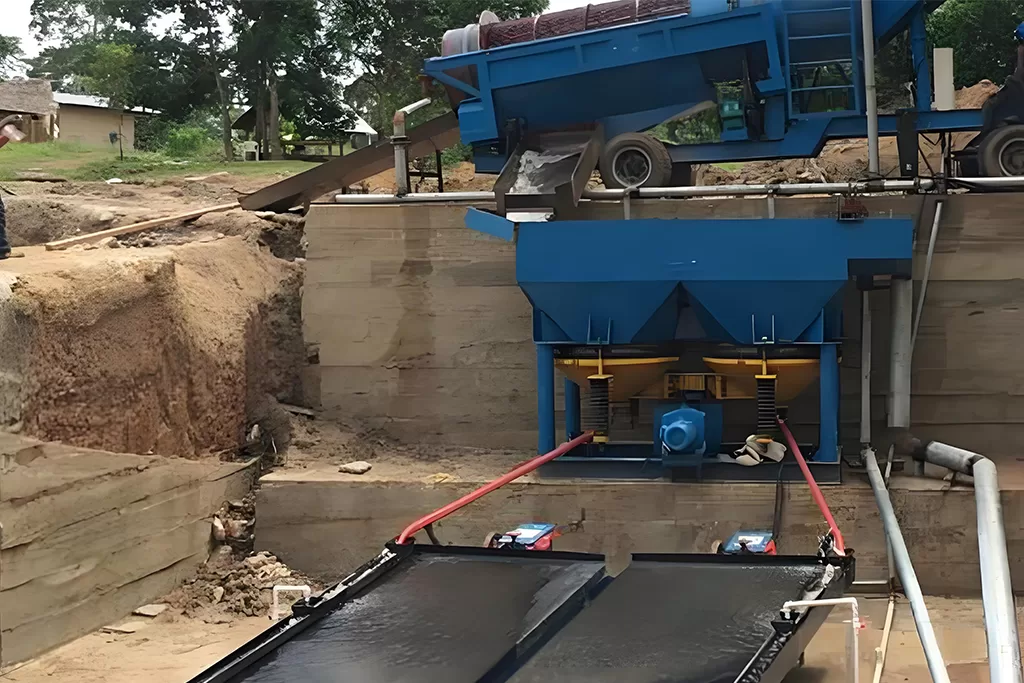
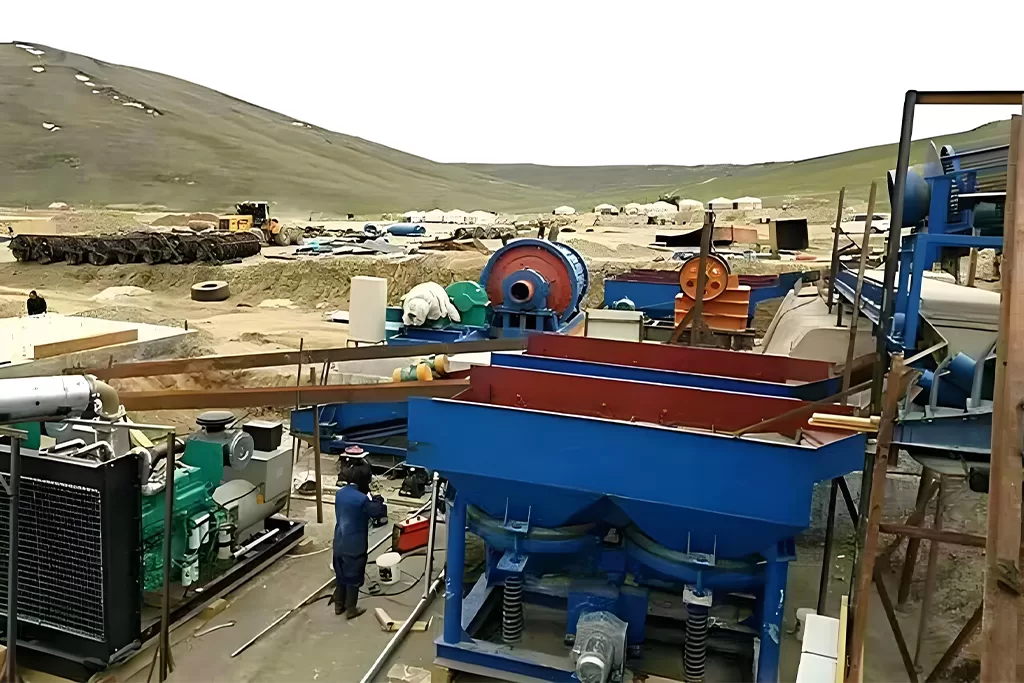
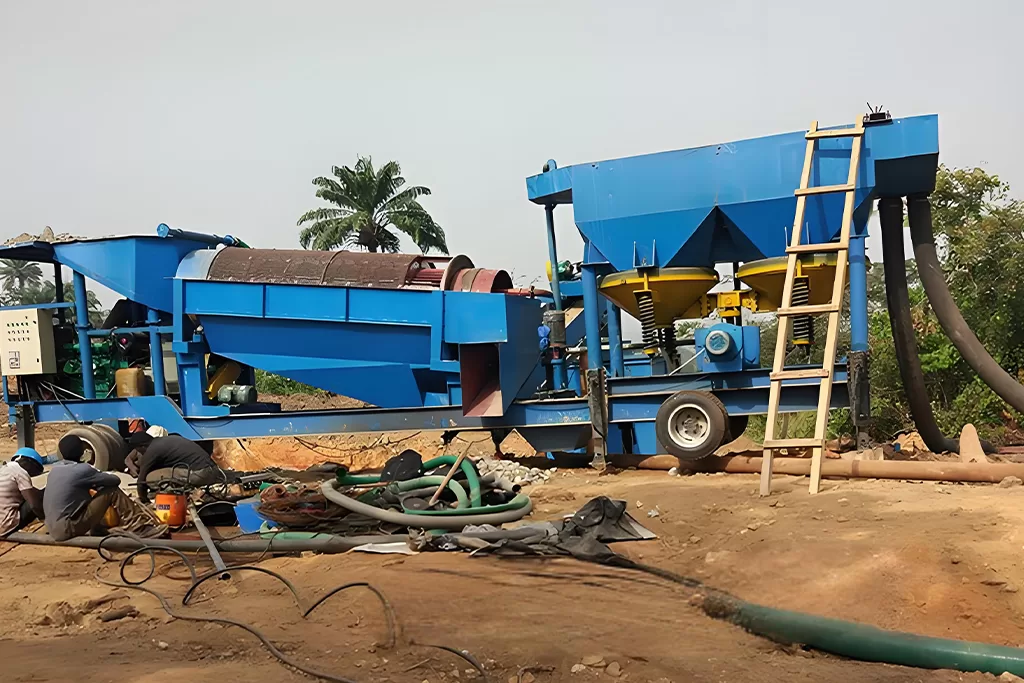
Resposta: Os principais factores que influenciam a separação incluem o movimento da mesa (curso e frequência), o volume e a inclinação da água, a taxa de alimentação e a concentração, bem como o tamanho e a forma das partículas do material de alimentação. O ajuste correto destes factores é fundamental para uma separação eficiente. As inclinações longitudinais e transversais da mesa devem ser controladas com precisão. A concentração de alimentação também deve ser adequada, normalmente 20-30% para minerais grosseiros e 15-25% para minerais finos.
Resposta: A operação envolve a observação da superfície da mesa e o ajuste da inclinação, do fluxo de água e da taxa de alimentação. A manutenção regular inclui a verificação de peças soltas, a lubrificação dos componentes móveis, a inspeção do desgaste e a limpeza da superfície da mesa. A manutenção preventiva deve ser efectuada regularmente, com intervalos que variam entre cada mês e uma vez por ano.
Resposta: Os problemas mais comuns podem incluir a vibração da mesa ou cortes irregulares, distribuição desigual do material ou separação deficiente. A resolução de problemas pode envolver a verificação de parafusos soltos, molas danificadas ou desalinhamento, o ajuste da tensão da correia, a inspeção dos componentes eléctricos e a garantia de uma lubrificação adequada. Se houver um ruído invulgar, identifique a fonte e elimine o problema.
Resposta:
Vantagens: As mesas vibratórias oferecem elevadas taxas de enriquecimento, são relativamente simples de operar e produzem zonas de separação visíveis, permitindo um fácil ajuste e monitorização. São adequadas para uma vasta gama de tamanhos e densidades de partículas.
Desvantagens: Normalmente, têm uma capacidade de produção inferior à de outros métodos, como os jigues ou as espirais. Também requerem uma área relativamente grande e consomem uma quantidade significativa de água.
Resposta: A seleção depende do material a ser processado, do rendimento desejado e da gama de tamanhos de partículas. Os factores a considerar incluem a área da plataforma, o comprimento do curso e o design do riffle. Recomenda-se a consulta de um fabricante ou especialista para determinar a configuração ideal.
